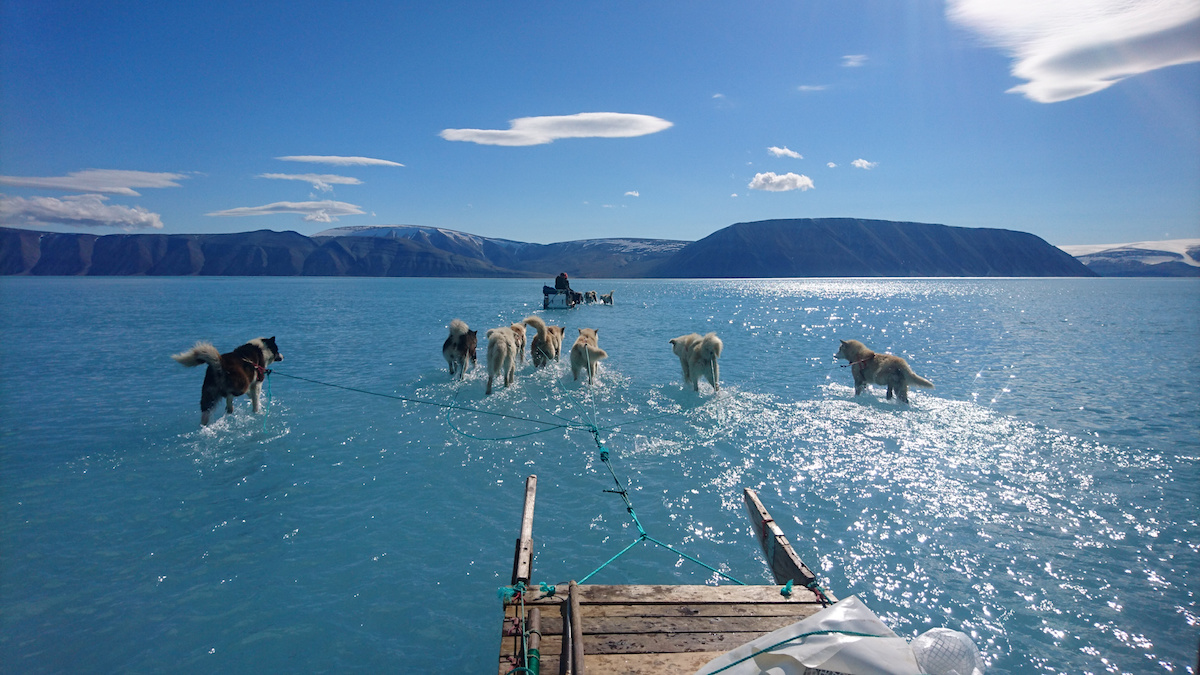A Greenland dog-sled expedition for science faced flooded sea ice following unusually warm temperatures
The sea ice remained relatively thick, a Danish scientist told Reuters, keeping the meltwater from draining quickly.

A dog-sled team on a mission to retrieve specialist instruments on the sea ice near Qaannaaq, Greenland ran into standing water after the onset of warm conditions across the northern territory caused rapid ice melt.
The project run by the Danish Meteorological Institute, in close collaboration with local hunters sees instruments used to monitor sea ice and ocean conditions in Inglefield Bredning collected in early summer before the sea ice breaks up. This year’s expedition however was faced with a lot of standing water on the ice.
Last week saw the onset of very warm conditions in Greenland and much of the rest of the Arctic, driven by warmer air moving up from the south and approximately 2 billion tonnes of ice was lost in a day on June 13 when the photograph was taken, Steffen Olsen of the DMI told Reuters.
The ice by Qaannaaq village and the Inglefield Bredning forms every winter and is very thick which means that there are relatively few fractures through which meltwater can drain, according to Olsen.